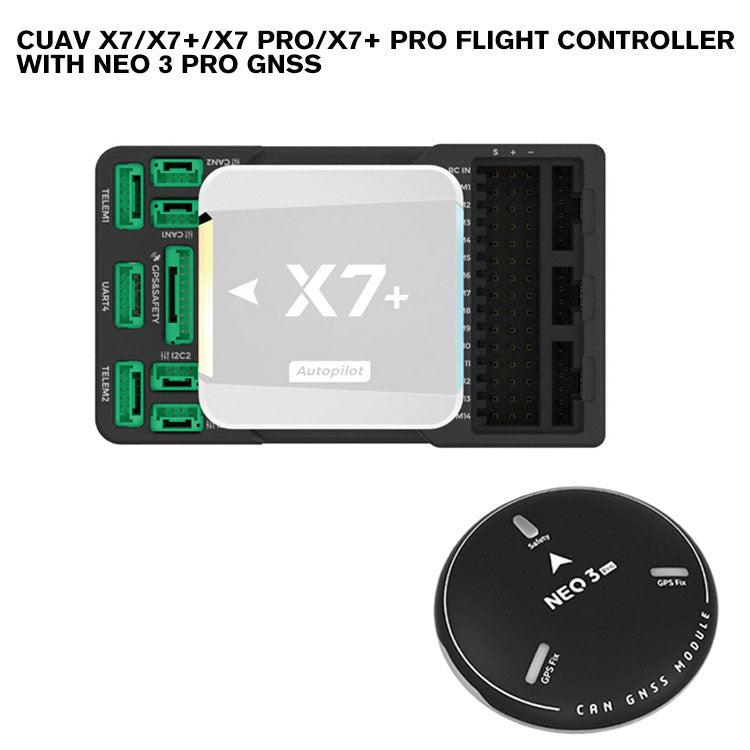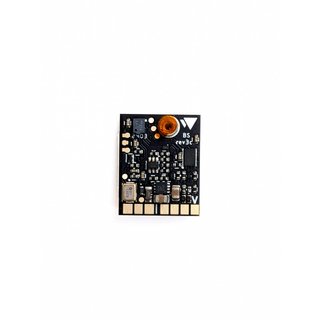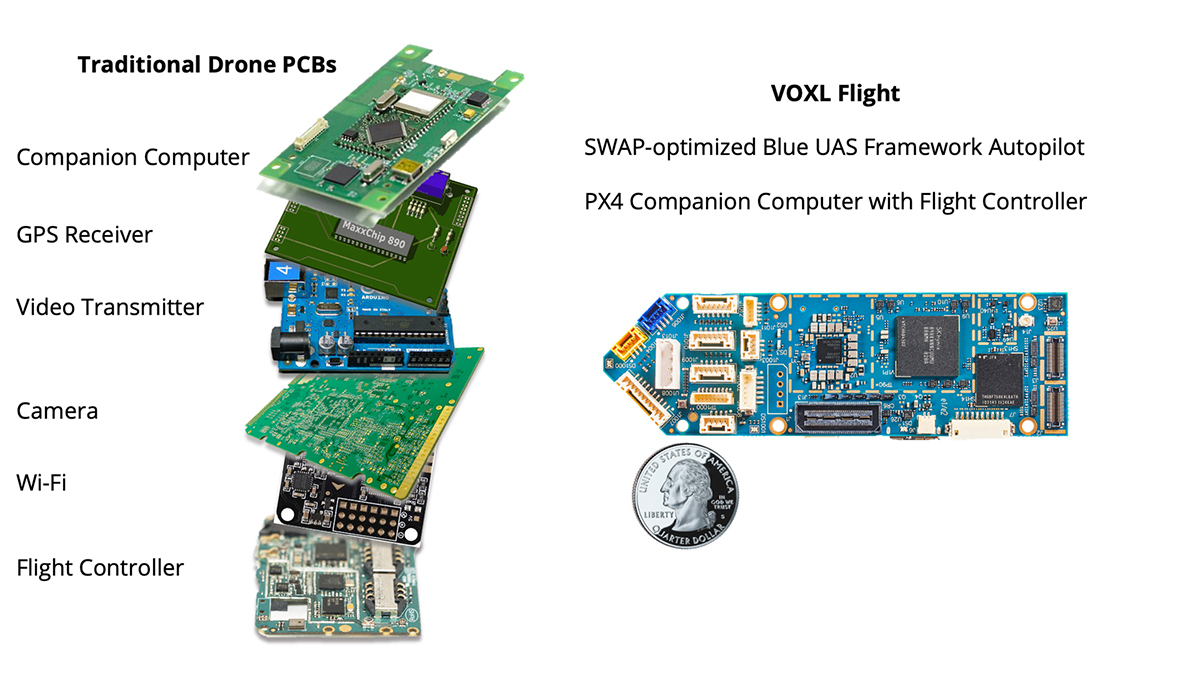Checking Out the Function of Drone Flight Controllers in Enhancing Flight Security and Navigation Efficiency
The advancement of drone innovation has substantially boosted the significance of trip controllers, which act as the mind of these airborne vehicles. By incorporating real-time data from a range of sensing units, trip controllers enhance flight security and navigating effectiveness, guaranteeing that drones can operate efficiently also in complex settings. This conversation will certainly discover the key components that add to these renovations, along with the effects for the future of independent trip. What innovations exist ahead that could further change the abilities of drone flight controllers?

Recognizing Trip Controllers
Trip controllers are integral parts in the functioning of drones, functioning as the minds that manage and maintain flight procedures. These sophisticated devices process data from various sensors, consisting of accelerometers, gyroscopes, and GPS, to ensure that the drone preserves its designated flight path. The trip controller translates this information and performs commands based upon pre-defined formulas, allowing the drone to react to ecological modifications, such as wind or barriers.
The main feature of a flight controller is to maintain stability during trip. It accomplishes this by making real-time modifications to the drone's motors and control surface areas, ensuring balance and control. In addition, modern trip controllers incorporate innovative functions such as waypoint navigating, allowing for automated trip paths and boosted operational efficiency.
Comprehending the design of flight controllers is important for both specialists and enthusiasts. As modern technology breakthroughs, trip controllers have actually become much more qualified and small, incorporating artificial intelligence to adjust and enhance decision-making procedures to complicated flight circumstances.
Trick Elements of Trip Security
Attaining optimal flight security in drones depends on numerous vital components that function in performance to ensure controlled and smooth operations. Central to this stability is the flight controller itself, which refines information from different sensing units to maintain the preferred flight attitude. This consists of accelerometers and gyroscopes that determine motion and alignment, permitting real-time adjustments to the drone's placement.
An additional crucial element is the digital rate controllers (ESCs), which control the power delivered to the motors. By carefully adjusting electric motor speeds in reaction to flight controller commands, ESCs assist preserve equilibrium and counteract disruptions brought on by wind or abrupt activities.
Furthermore, the style of the drone's frame plays a pivotal duty in flight stability. A well-structured framework lessens resonances and improves the general aerodynamic account, adding to smoother trip qualities. Lastly, the assimilation of advanced algorithms within the trip controller aids in anticipating adjustments, guaranteeing a versatile and responsive trip experience.
Together, these elements develop a cohesive system that enhances a drone's stability, allowing for specific maneuvering and boosted performance in different flight conditions.
Navigation Efficiency Techniques
Efficiency in navigation is essential for maximizing drone procedures, specifically in complex environments. Effective navigating techniques enhance the capability of drones to pass through difficult terrains and avoid barriers, thereby improving operational efficiency and security.
One noticeable method is the implementation of advanced GPS and inertial measurement units (IMUs) that offer accurate area monitoring and orientation data. These modern technologies allow drones to calculate optimal trip paths in real-time, taking into account various variables such as wind conditions and potential challenges.
One more technique includes using formulas for course preparation and optimization. Formulas such as A * and Dijkstra's algorithm can be deployed to figure out one of the most efficient course while lessening energy usage and trip time. In addition, incorporating equipment knowing models can make it possible for drones to adaptively pick up from their settings, boosting navigating capacities with experience.

Effect On Autonomous Drones
The assimilation of innovative navigating strategies has actually greatly changed the capabilities of autonomous drones, allowing them to run with greater autonomy and precision. SparkNavi drone flight controller and GNSS/INS made in taiwan. These enhancements are mainly attributed to sophisticated flight controllers that make use of real-time information handling and sensor fusion, permitting drones to browse intricate settings effortlessly
The effect on autonomous drones expands past simple navigation; it incorporates improved obstacle avoidance, enhanced security during vibrant conditions, and boosted objective reliability. By leveraging algorithms that include device discovering and synthetic knowledge, drones can adjust to altering circumstances, making informed decisions that enhance their flight courses while reducing dangers.
Furthermore, the execution of durable trip controllers has facilitated the implementation of complex tasks, such as airborne evaluations, delivery services, and farming monitoring, with marginal human intervention. This capability not just improves operations but additionally decreases human mistake, thereby improving overall security.
Consequently, the functional extent of autonomous drones has actually increased dramatically, making them important tools in different sectors. Their capability to execute efficiently in diverse situations highlights the essential duty that progressed trip controllers play in shaping the future of unmanned aerial systems.
Future Fads in Trip Control
Often, developments in trip control innovation are poised to redefine the landscape of drone operations in the coming years. Arising fads show a our website significant shift in the direction of boosted expert system (AI) combination, allowing flight controllers to process real-time data more efficiently. This development will certainly assist in improved decision-making abilities, enabling drones to adapt to vibrant ecological conditions autonomously.
Additionally, the application of artificial intelligence algorithms is expected to enhance predictive upkeep, consequently lessening downtime and expanding the lifecycle of drone parts. This positive approach to upkeep will be important as drone applications broaden across numerous sectors, from farming to logistics.

.jpg)
Last but not least, advancements in protected interaction protocols will deal with security and regulatory concerns, ensuring that drones can operate seamlessly in congested airspaces (SparkNavi drone flight controller and GNSS/INS made in taiwan). Jointly, these fads point towards a future where flight control systems are not only smarter and extra reliable yet additionally qualified of running securely in a progressively integrated airspace
Verdict
Finally, drone trip controllers are essential to boosting flight security and navigation effectiveness via the innovative processing of sensor data. By preserving ideal flight perspectives and using innovative formulas for course optimization and barrier avoidance, these controllers considerably contribute to the freedom and functional safety and security of drones. As technology remains to progress, further innovations in trip control systems are anticipated, guaranteeing improved performance and broadened capacities in the world of unmanned airborne lorries.
By incorporating real-time information from a selection of sensing units, trip controllers boost trip security and navigation effectiveness, making sure that drones can run smoothly also in intricate settings.Trip controllers are indispensable parts in the performance of drones, serving as the minds that stabilize and take care of trip procedures. Furthermore, contemporary flight controllers incorporate advanced attributes such as waypoint navigating, enabling for automated trip courses and improved functional effectiveness.
Central to this stability is the trip controller itself, which refines data from various sensing units to preserve the preferred flight perspective.In verdict, drone trip controllers are important to boosting trip security and navigating efficiency with the innovative handling of sensor information.
Comments on “SparkNavi Drone Flight Controller and GNSS/INS Made in Taiwan: Blazing A Trail in Drone Technology”